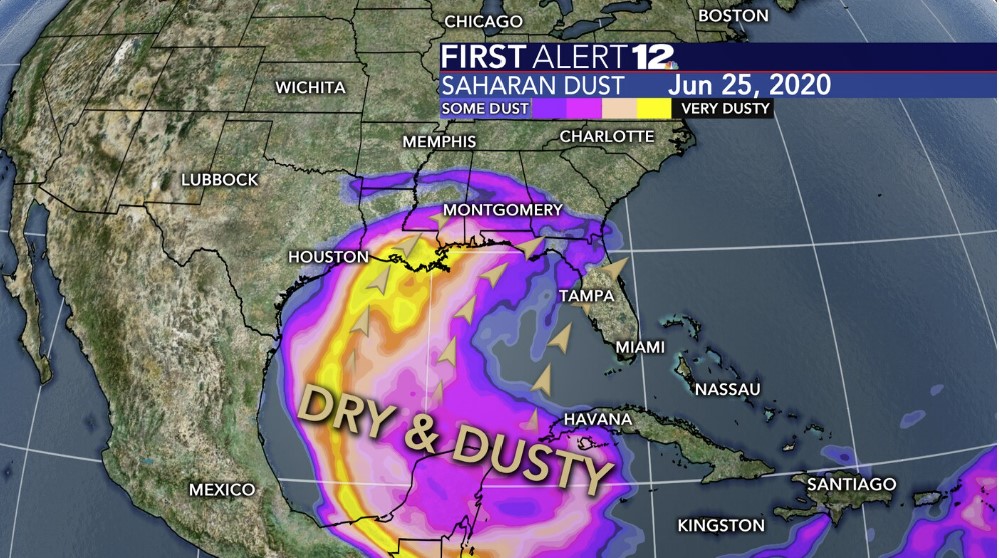Satellite images show that a vast plume of Saharan dust is drifting westwards over the Atlantic.
And meteorologists are predicting that it will reach the U.S. by next week, if not sooner!

Some of the dust could arrive in parts of the U.S. Gulf Coast, such as southern Texas, Louisiana and Florida, by next Wednesday… If not sooner.
This phenomenon is the result of tiny sand and mineral particles being swept up off the surface of the Sahara Desert by winds.

These particles are then carried by updrafts into an extremely dry and hot air mass known as the Saharan Air Layer, which forms above the desert between late spring and early fall.
Strong winds frequently blow this dust-laden air layer — which extends between altitudes of 5,000 and 20,000 feet — westwards during this period of the year, transporting dust thousands of miles to the Caribbean, and U.S. Gulf Coast.

Every year, hundreds of millions of tons of this dust can be blown across the Atlantic, with transport peaking between June and July.
This video by NASA’s Scientific Visualization Studio / NASA Center for Climate Simulation shows the dust flying across the Atlantic Ocean:
Health threat and risk
Because of its very low concentrations and the tiny size of the particles, many people on the ground will probably not even notice the effects of the dust when it arrives next week, apart from perhaps the hazy skies and particularly intense sunrises/sunsets that it sometimes causes.

However, those with respiratory problems, such as asthma and allergies, as well as the elderly and young children, can be especially sensitive to the dust — which can be inhaled into the lungs — and may experience some irritation after prolonged exposure. You should limit your time outside if you are concerned about your health in these circumstances.
Did you have Trans Atlantic Dust storm on your 2020 bingo? https://t.co/StqGhvJuxN
— エル??ケンタロウ (@elkentaro) June 16, 2020
Studies have associated exposure to tiny particles in the atmosphere with respiratory disorders such as asthma, as well as some cardiovascular disorders and other health problems. However, research looking at the health impacts of Saharan dust specifically is relatively limited, and the evidence is still inconsistent as to what role it may play in the development of disease in humans.
After such a busy start to the Atlantic hurricane season, we may see a brief lull. Part of the Gulf has cooled, thanks to Cristobal. Also, dust from the Sahara is moving just north of the equator and can limit tropical development in that region. pic.twitter.com/EIxFGpl5Os
— Chris Michaels (@WSLS_Michaels) June 11, 2020
Benefits of Sahara dust
Despite the potential health risks, the dust may also provide some significant benefits. Scientists think that the dry, dusty Saharan Air Layer may help to suppress the development of hurricanes and more minor tropical storms.

“Saharan dust changes the regional climate by reflecting and absorbing the sunlight, which decreases the sea surface temperature,” explains Bowen Pan from Texas A&M University’s Department of Atmospheric Sciences. “[This] decreases the energy supply to the storms. Additionally, dust also stabilizes the atmosphere.“
Some of the dust even reaches the Amazon region in South America where it helps to replenish nutrients in rainforest soils that are depleted by tropical rains. More strange sky phenomena on Strange Sounds and Steve Quayle. [WSFA, NASA, Newsweek]













Thanks Strange Sounds , i said it in my predictions i called it Ho bob and i said it will happen within time frame i mentioned.
Your reader be judge?